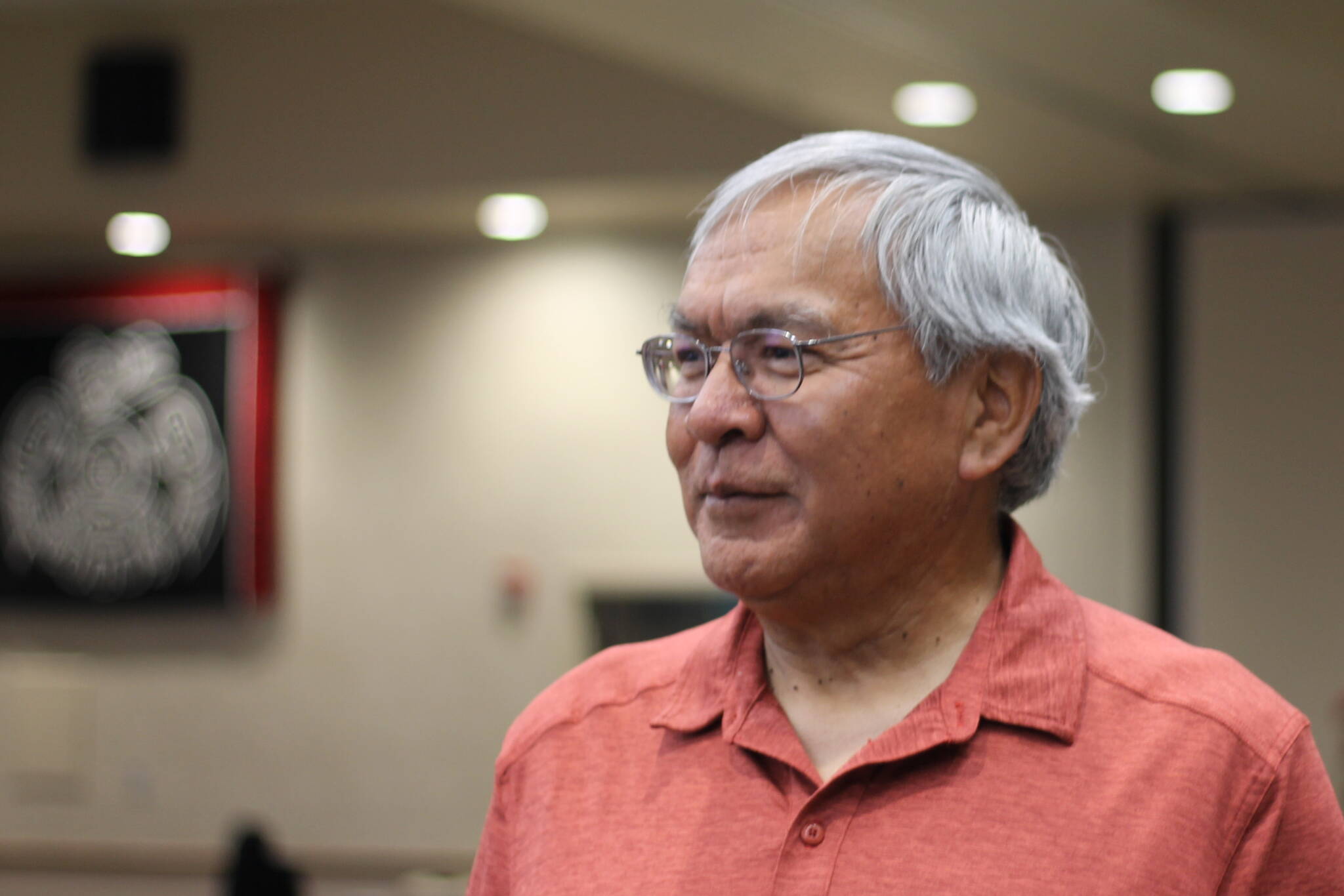Mary Kininnook was laid to rest at the Carlisle Indian Industrial School’s cemetery in Pennsylvania in 1908, more than 3,000 miles away from her home in Saxman, Alaska, where she was taken from. She was 14 years old when she died, according to a resurfaced letter that identified her death and burial.
Kininnook, who was Tlingit, still remains buried there to this day, under one of the 14 nameless gravestones that mark the final resting places of children who lost their lives along with their cultures, families and identities at the infamous boarding school, according to Laird Jones, Kininnook’s great-nephew.
Jones, a Juneau resident, shared her story at a sharing event held at the Elizabeth Peratrovich Hall Friday afternoon. The event was hosted in collaboration with the Central Council of the Tlingit and Haida Indian Tribes of Alaska and the Carlisle Indian School Digital Resource Center community, a data-sharing project that seeks to help families connect with and learn about their relatives who were removed from their homes and culture. The event shared the names of Alaska children taken away from their families and sent to the boarding school from which many never returned.
“It brought a lot of tears to the family,” Jones said. “She is so far from here, we want to bring her home to be with family.”
From 1879-1918 the Carlisle Indian Industrial School in Pennsylvania housed nearly 7,900 children from 140 native tribes across the United States. Its mission — along with many of the boarding schools that scattered the U.S. including the 24 off-reservation schools the Carlisle model spawned — was to take Indigenous children from their culture and divorce them of their Indigenous identity in exchange for U.S. values and culture. A common phrase said by the school’s founder Richard Henry Pratt was “Kill the Indian, save the man. Through research done by the Carlisle Indian School Digital Resource Center, people across the country have been able to identify their lost relatives and, and have been able to find information about some of the 127 students who identified as Alaskan at the school.
For many, like Jones and his family, the painful past still reverberates into life today, but bringing his great-aunt home to Alaska symbolizes one step closer to maintaining his family and culture’s history.
“There is a lot of loss, but there is also absolute survival to maintain our culture and history,” he said.
Jones said he shared her story to continue her voice and the history behind his family heritage. He said by sharing the stories of those lost, it’s a chance to heal and maintain his family’s culture for future generations.
“It’s overwhelming on every front,” said Sarah Dybdahl, the cultural heritage and education manager for Tlingit and Haida, who was the emcee of the event. “The ability to know where they are, and to bring them home is so important for our generation to move forward and heal.”
Dybdahl shared the story of her great-great-grandparents who also attended boarding school.
“They were able to return home, but that’s not a common story or thread,” she said.
She hopes the event gave people a sense of healing and comfort knowing those lost to the boarding school are still being spoken of more than 100 years later.
• Contact reporter Clarise Larson at clarise.larson@juneauempire.com or (651)-528-1807. Follow her on Twitter at @clariselarson.

